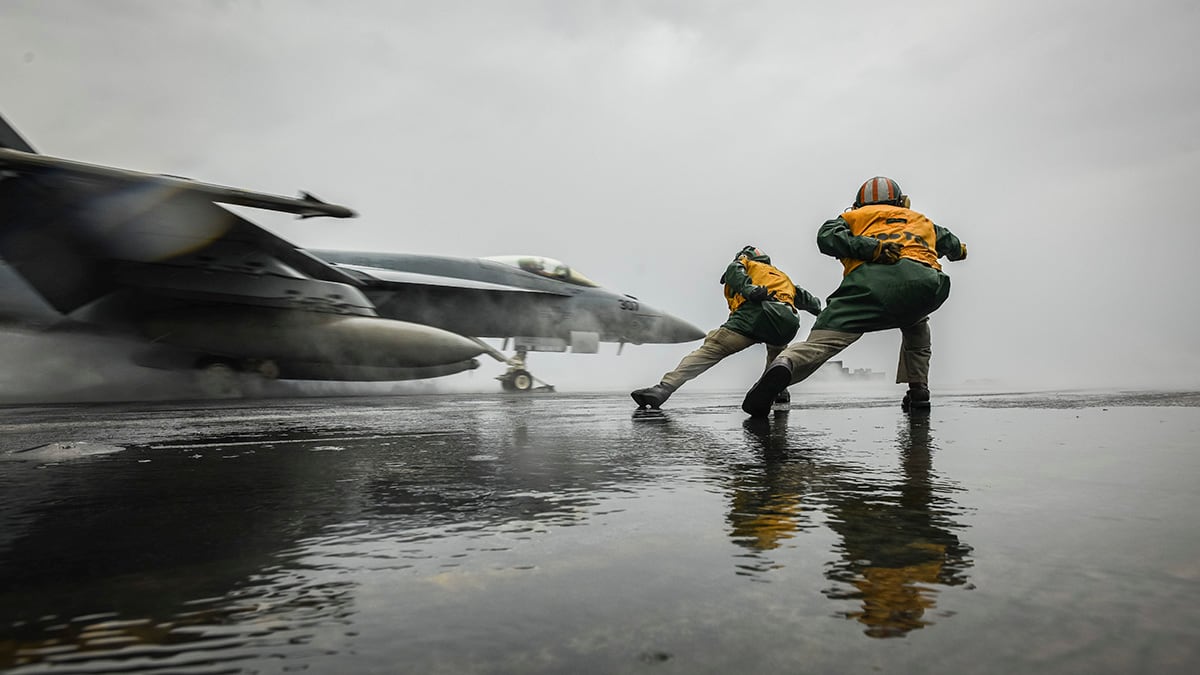WASHINGTON — Congress seems to have come to an agreement on spending for fiscal year 2018, and military aircraft procurement is slated to receive a major bump, funding an additional 143 aircraft above the services’ requests.
That’s great news for major defense primes like Lockheed Martin and Boeing, both of which stand to make billions more from the additional sales.
A caveat before diving in: Although the omnibus language marks a big step forward after months of stymied negotiations and continuing resolutions, the bill still hasn’t been passed by Congress yet. The House and Senate must pass either a spending bill or CR before the end of this Friday, and it’s possible that various lawmakers could seek to obstruct the bill.
Here’s how the major aviation accounts fared:
F-35 joint strike fighter
Unsurprisingly, it was a good year for Lockheed Martin’s F-35. Congress added $2.9 billion for an additional 20 joint strike fighters, which would put total FY18 procurement at 90 planes.
If the spending bill is passed, the Navy and Marine Corps will get not only the number of joint strike fighters requested in the budget, but also the ones detailed in their “unfunded requirements lists” sent every year to Congress. For the Navy, that’s eight F-35C carrier takeoff and landing variants. Meanwhile, the Marine Corps would get 24 F-35B short takeoff and vertical landing variants and two F-35Cs.
The Air Force will get 56 F-35A models — just four short of its unfunded requirement.
F/A-18E/F Super Hornet
In its FY18 budget request, the Navy requested 14 new Super Hornet aircraft. Lawmakers, who have long been supportive of the program, added 10 aircraft on top of that, funding a total of 24 new F/A-18E/Fs.
Those extra fighters will help Boeing extend the life of its production line and ameliorate the loss of a deal with Canada for 18 Super Hornets, which failed last year due to a trade dispute.
Boeing’s KC-46 refueling aircraft
The Air Force’s KC-46 tanker has been raked over the coals over the past few weeks, with the service blasting manufacturer Boeing for continued schedule delays and a couple new technical problems.
But despite questions from some lawmakers about the health of the program during hearings this month, Congress added $510 million to fund an extra three KC-46s. That would bring the Air Force’s total KC-46 procurement for FY18 up to 18 tankers.
Other highlights
Notably, Congress also included funding for aircraft not requested by the services in budget documents at all. For instance, it added 12 C-130J Super Hercules planes for the Air National Guard. The Navy would pick up six MQ-8 Fire Scout unmanned helicopters made by Northrop Grumman, at a cost of $84 million.
It also included two C-37B aircraft for the Air Force — the military’s designation for a Gulfstream G550 — to meet an unfunded requirement after the divestment of five C-20s.
An extra $600 million would add five MC-130Js for Air Force special operators, for an overall procurement of 10 aircraft this fiscal year. The service would also get one additional HC-130J, for a total of three.
Congress inserted an additional $501 million for three extra P-8 Poseidon maritime surveillance aircraft, for a total of 10 P-8s for the Navy. It also increased spending on V-22 procurement by $676 million to bring Navy and Marine Corps procurement from six to 14 tiltrotor aircraft.
The bill grows the Marine Corps’ CH-53K helicopter program from four to six aircraft, at a cost of $250 million. The service also would get $221 million for seven AH-1Zs, bringing the total for FY18 up to 29 helicopters.
The omnibus also includes significant plus-ups for Army aviation, including an extra $577 million for 17 AH-64E Apache helicopters and $90 million for 11 UH-72 Lakota helicopters. The Army National Guard would get $108 million for eight UH-60 Black Hawk helicopters.
It also included major increases for unmanned systems, growing the Army’s MQ-1 Gray Eagle procurement from 11 to 20 air vehicles and increasing the service’s procurement of RQ-5 Shadow drones by $110 million.
Valerie Insinna is Defense News' air warfare reporter. She previously worked the Navy/congressional beats for Defense Daily, which followed almost three years as a staff writer for National Defense Magazine. Prior to that, she worked as an editorial assistant for the Tokyo Shimbun’s Washington bureau.





